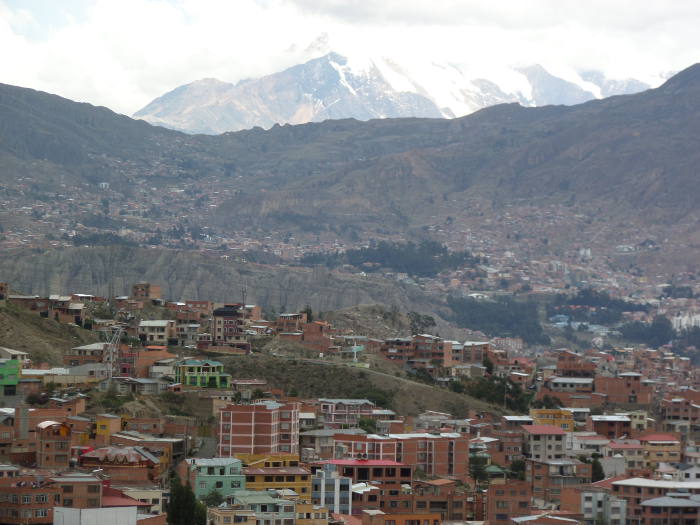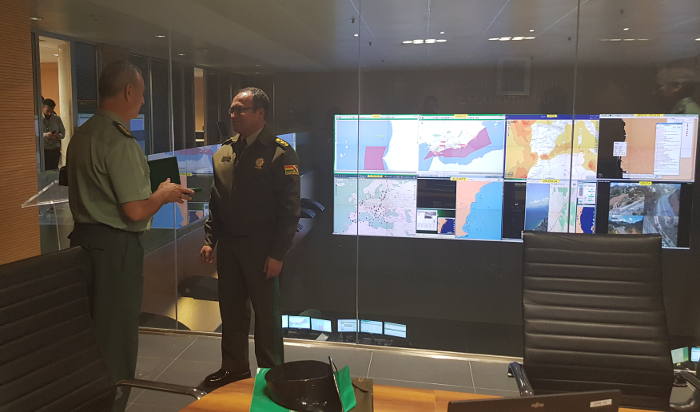-
|
22 November 2018
|Posteado en : Reportage
FIIAPP addresses human trafficking as a global problem: many countries are affected by being the place of origin, transit or destination of victims.
There are many people who fall into the hands of organisations that exploit them, sexually or professionally, taking their freedom against their will. Human trafficking has become the form of slavery of the 21st century.
It is important to know what we mean by human trafficking, whose world day is celebrated on July 30. The United Nations Office on Drugs and Crime, UNODC, defines it as “the transfer of human beings from one place to another within the borders of the same country or abroad for the purpose of sexual exploitation, work or begging”.
To give an idea of the scale of this crime, the United Nations points out that there are around 21 million victims, 30 percent of them children and 70 percent women and girls. In addition, all these victims come from 137 countries, a fact that reflects the scale of this problem.
“Capture, trafficking and exploitation”
For there to be trafficking, “there need to be three phases: capture, trafficking and exploitation“, says Félix Durán, head of the Human Trafficking group of the Central Operative Unit (UCO) of the Civil Guard and expert of the project in the fight against drug trafficking in Bolivia, financed by the European Union and managed by FIIAPP.
Based on this, certain people are captured for exploitation, whether for labour, sexual, begging or organ trafficking purposes, among others; and this deception is used to take those people to other countries. “For there to be human trafficking, there must be transport and then exploitation,” says Félix Durán. The exploitation phase is the difference between human smuggling and human trafficking.
In addition, Felix Durán tells us that most of the cases of trafficking that occur in Spain are from people who come from southern Africa (especially from Nigeria), Eastern Europe (Bulgaria and Romania) and China. The profile of the victims is that of girls, especially from Nigeria, as well as elderly people in the case of Romania.
On the other hand, there is great difficulty in demonstrating an offence of human trafficking, especially if it is sexual. In order to be able to justify the crime judicially and be able to arrest the people involved, it is especially important to prove< the three phases mentioned, which in many cases is very difficult.
The case of Bolivia
In the Bolivian project, already mentioned, work is being carried out in the fight against human trafficking, since this problem is a crime related to drug trafficking, the main theme of the project. The project focuses mainly on the “3 Ps”: perception, persecution and protection.
There is a lot of trafficking in this country, so much so that Bolivia has been included “in the black list of countries that do not work against trafficking”, according to Félix Durán, an expert on this project.
Furthermore, a programme has been created in which training is provided to public officials who are closely related to this problem, working with both the national and municipal administrations.
In this regard, he emphasises the importance of cooperation projects in this area, in which “public officials who work on this struggle must be made aware” of the obligation to “provide training so that they know how to identify a case of human trafficking” and finally, as trafficking is a criminal offence, the need for international cooperation between institutions, according to Durán.
Nigeria, a place where human trafficking occurs
In the case of Nigerian women in Europe, 95% of them come from Benin City, an area of around 10 million inhabitants belonging to Edo State.
The majority of these girls are captured within a family environment in which their parents make them available to trafficking organisations. Such is the number of victims in this country that there are mediators from Benin City itself, many of them former victims of trafficking, who facilitate the work of the authorities in communicating with them.
In this country, the A-TIPSOM project, financed by the European Union and managed by FIIAPP, seeks to reduce human trafficking and irregular migrant trafficking, both nationally and regionally and between Nigeria and the EU. It also pursues five fundamental objectives, the “5 Ps”: policy or strengthening of institutions and the legal framework, prevention with awareness and training activities, protection of victims, prosecution of smugglers and traffickers and partnership or coordination of the actors involved.
According to Rafael Río Molina, coordinator of this project, the situation in Nigeria right now is complex, since “the country is a strong point of migration and transit” due to the fact that it is in the centre of the African continent. In addition, “the number of women and children who are victims and who fall into the network of prostitution and labour exploitation, according to statistics, is higher than that of men”, which is why they focus more on these groups.
The enormous number of cases of human trafficking currently in existence means that this problem must be addressed from a transnational dimension, through cooperation between countries and regions.
-
|
06 September 2018
|Posteado en : Reportage
How do you fight against drug trafficking in a coca leaf producing country? We know the case of Bolivia together with the project to support institutions in this task
The United Nations Office on Drugs and Crime (UNODC) states in its report on coca leaf crops in Bolivia that the country has more than 20,000 legal hectares. An extension concentrated on two main areas: the area of the Yungas, in the Department of La Paz; and the area of Chapare, in the Tropic of Cochabamba.
The UNODC thus provides information to the Bolivian government on the amount and geographical location of the crops, since part of the coca leaf is diverted to illicit trafficking. The Bolivian Police and other institutions involved are trying to avoid this product becoming an international drug. This report allows them to develop strategies and policies for their control.
These institutions also have the support in this task of a project managed by the FIIAPP , in coordination with the National Council for the Fight against Illicit Drug Trafficking (CONALTID), with funds from the European Union and the AECID (Spanish International Development Cooperation Agency). And the paradox is even more difficult to tackle when the coca leaf is a cultural product.
The farmer is not the trafficker
Javier Navarro is one of the experts of the project. The Spanish National Police inspector recalls that “the consumption of coca leaf is something that is deeply rooted in their customs.” In Bolivia, the product is consumed directly with the acullico (chewing the coca leaf itself with other products that sweeten it) or is used for yerba mate or sweets.
Its production is managed through cooperatives. Each registered farmer has the right to grow one cato (1,600 square metres plot) of coca. The product would reach the legal market after going through the cooperative. The problem is that not all production follows that path.
Part of the coca leaf enters “parallel circuits” and with it the base paste from which cocaine hydrochloride comes out is made. Once this substance is obtained, we speak of trafficking itself, explains the police inspector. There are also illegal crops “in border areas or areas that are difficult to access”.

La Paz (Bolivia) None of the farmers, however, cooperate on this, they just live on it. “The producer does not have the profile of a trafficker,” says Navarro, and even if they acted unlawfully, they would be the smallest link in the entire drug trafficking chain.
Javier Navarro also points out that “Bolivia is not only a producer, but also a transit country”, mainly due to geographical issues. The base paste comes to the country from Peru, which is also a producer, to carry out the so-called “purification” in laboratories.
And he provides an important fact: “One kilo of cocaine hydrochloride costs 2,500 dollars in Bolivia. When it arrives in Spain, it costs 35,000 dollars.” Once again, Spain acts as a transit country: from here cocaine is exported to France, Italy or Great Britain with the resulting price increase. A journey that makes it a transnational problem.
What is the aim of the project?
To deal with this problem, members of the Civil Guard and the National Police work on this project with Bolivian officers in the fight against drug trafficking and related crimes, such as money laundering and human trafficking. Action is additionally taken at borders and airports.
In particular, the Special Force to Fight against Drug Trafficking is formed, specialised units spread over several areas of Bolivia. Drug trafficking is the dominant sector in organised crime. The changes in its methods of organisation and action require constant adaptation in the devices and strategies fighting this problem.
This training that has been complemented by visits to Spain to learn about the procedures of the Spanish security forces, for example, in intelligence and criminal investigation.

After two years of work, “the project is consolidated and it is the institutions themselves that come to it”, explains Javier Navarro. Among other things, the investigations have been addressed in a more comprehensive way. This is, according to the inspector, to not only stop the trafficker, but also to have the organisations dismantled.
This work is completed with the citizens’ awareness through some communication activities. The last of these, a workshop for journalists in which they worked on how to adequately communicate on such sensitive issues.
Projects for a transnational problem
Until recently, the FIIAPP managed a similar project in Peru , an example of good results with the dismantling of more than one hundred criminal organisations dedicated to illicit drug trafficking. The Foundation is also present in this operational dimension with the SEACOP project, for the fight against maritime drug trafficking.
There are also regional programmes to add to the public policies of Latin American countries. This is the case of EL PAcCTO against transnational organised crime or COPOLAD , which covers the social and health dimension.
Other projects follow the most important drug trafficking routes, such that of as heroin. EU-ACT operates in 30 countries in Central Asia, the East Coast of Africa and Eastern Europe, and works to improve the effectiveness of police and judicial bodies, as well as to prevent drug use.






